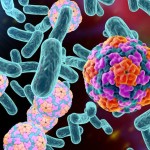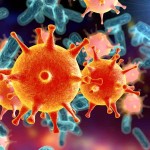Frost Bite
Frostbite is a medical condition involving damage to skin and tissues due to extreme cold. Frostbite is most likely to happen in body parts that are far from the heart or those with large exposed areas to cold weather. The initial stages of frostbite are sometimes called “frost nip”. A person with frostbite on the arms or legs may also have hypothermia (lowered body temperature). Frostbite can occur when skin is exposed to a temperature at or lower temperature of 0 °C (32 °F), resulting in vasoconstriction. The resultant decrease in blood flow does not deliver sufficient heat to the tissue to prevent the formation of ice crystals. The anatomic sites most susceptible to frostbite include hands, feet, and exposed tissues (eg, ears, nose, and lips).
Symptoms
At or below 0 °C (32 °F), blood vessels close to the skin start to constrict, and blood is shunted away from the extremities via the action of the glomus bodies (glomus bodies are most numerous in the fingers and toes. The role of the glomus body is to shunt blood away from the skin surface when exposed to cold temperature, thus preventing heat loss, and allowing maximum heat flow to the skin in warm weather to allow heat to dissipate. The glomus body has a high sympathetic tone and potentiation leads to near complete vasoconstriction). There are four degrees of frostbite. Each of these degrees has varying degrees of pain .
First degree: It is known as frostnip. It only affects the surface of the skin, which is exposed. On the onset, there is itching and pain, and then the skin develops white, red, and yellow patches and becomes numb. The area affected by frostnip usually does not become permanently damaged as only the skin's top layers are affected.
Second degree: If skin is exposed to cold for longer time, then it may freeze and harden, but the deep tissues are generally not affected and remain soft and normal. Second-degree injury cause blisters for about one or two days after becoming frozen. The blisters may become hard and blackened, but usually appear worse than they are. Most of the injuries heal in one month, but the area may become permanently insensitive to both heat and cold.
Third and fourth degrees: If the exposed area freezes further, deep frostbite occurs. The muscles, tendons, blood vessels, and nerves all freeze. The skin becomes hard, feels waxy, and the area is lost temporarily, and may be permanent in severe cases. The deep frostbite results in areas of purplish blisters which turn black and which are generally blood-filled. Nerve damage in the area can result in a loss of feeling. This extreme frostbite may result in fingers and toes being amputated if the area becomes infected with gangrene. If the frostbite has not treated, it may fall off. The extent of the damage done to the area by the freezing process of the frostbite may take several months to assess, and this often delays surgery to remove the dead tissue.
Causes
Frostbite generally occurs when body is exposed to low temperatures.
The severity of frostbite depends on the temperature and period of exposure. When the temperature is below freezing point, it leads to frostbite due to inadequate blood circulation to the exposed body parts. This can be due to the body's reaction to freezing by constricting circulation to the extremities so as to preserve its temperature and fight hypothermia. It can further lead to hypothermia (extreme cold, inadequate clothing, wet clothes, wind chill). Poor circulation can also be due to other factors such as cramped positions, tight clothing, fatigue, certain medications, smoking, alcohol use, or diseases that affect the blood vessels such as diabetes.
Diagnosis
Frost bite is generally diagnosed based on the symptoms
Imaging Scans:
MRI and X-rays can also be used to know the extent of severity in the frost bite.
Treatments
It is better to prevent from being exposed to cold by taking necessary precautions.
Re-warming: It should be done only if that skin area will not be exposed to cold further. Ideally, re-warming should be done under medical supervision as:
It can be a painful process that might requires painkillers.
The best results are achieved by using a whirlpool bath that contains a mild antiseptic. The affected area should be re-warmed slowly by immersing it in warm (not hot) water. A bath of water at a temperature of 40-41C (104-105.8F) is recommended. Re-warming should last at least 30 minutes and should only be stopped once the affected body part has a red-purple color and can be easily moved.
Preventions
If there is high risk of frostbite for any length of time, clothing is very important.
Make sure that extremities, such as hands, feet, nose, ears and lips, are well protected. These are the most vulnerable areas and often the first to be affected. Healthy warm meals and drinks, such as hot chocolate, are effective in keeping you warm.
References:
CDC
NHS
U S National Library of Science









